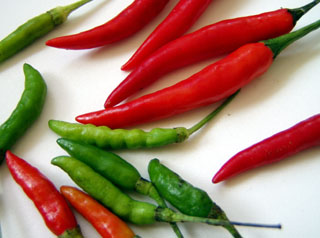Memories of childhood mealtimes drift mistily in and out of my thoughts occasionally. Sometimes there are only glimpsed recollections, whereas at other times vivid memories are triggered by unrelated events. Looking back I feel that my earliest sensory recall was based on what was described as post war rationing. A form of deprivation foisted upon the nation by cunning German U-boats, who managed to sink most incoming cargo ships apparently laden with tropical fruits, chocolate bars and beef extract. The severity of food shortages led to ration books, Digging for Britain posters, and kindly butchers, all cast in the same mould as Corporal Jones in Dad’s Army. What was undeniable was that the United Kingdom took a long time to recover, with many foodstuffs being severely restricted well into the 1950’s.
What I didn’t understand was why my Mother continued serving food from the Government’s Rationing Cookbook well into the 1960’s. Perhaps my father liked boiled mince and potatoes topped with a sprinkling of Lea and Perrins sauce. I wasn’t as keen.
As my schooldays came to an end, unlike the mince and potatoes, I began to introduce new fangled ingredients into the home kitchen. I knew there were spice racks and cookbooks out there, pasta that didn’t come in tins and olive oil that didn’t have to be purchased at chemists. I guess I could be regarded as one of the Habitat generation, all French country provincial at home and subtitled movies down at the cinema. With our new found birth-right of garlic presses and Dijon mustard, most of today’s foodstuffs and cooking techniques seem normal. To my dearly departed parents my gift of a spice rack was regarded as a tool of the Devil upon entry into our house. I had thought it a particularly creative birthday present, yet my mother, perhaps aware of her lack of culinary skills, winced in false gratitude whilst my father mumbled something uncomplimentary about foreign food. Suffice to say, the rack was neatly mounted on our kitchen wall, where it remained untouched save for a regular weekly dusting, until the entire contents had faded to a light khaki and appeared to atomise. Spices had to wait a few more years in order to figure in our house. The paternal mantra of a whole generation – “I don’t like spicy foods” – still haunts me today.
So it was when I set off the other week to a Chilli Festival, that I thought fondly of them both. The annual festival was held in the grounds of the National Trust’s Felbrigg Hall, a fine 17th Century pile here in North Norfolk. The festival comprised some thirty-odd stalls, most of which were dedicated to the Capsicum family. There were chillis of all shapes, sizes and hues. Jams, preserves, pickles, rubs and jellies adorned the stalls, whilst the smell of Indian samosa cooking, wafted enticingly around the field. My parents were longstanding members of the National Trust, so I could only hazard a guess as to my fathers reaction when offered a Chilli ice cream or a hot onion Bhaji instead of the oak leafed oven glove frequently purchased at one of the Trust’s worthy shops. The incongruity will surely have him turning, although in fairness it shouldn’t.
At the same time as the stones were being laid to form Felbrigg’s foundations, the chilli pepper was making its way around the world from its heartland in the South Americas. It initially travelled back to Spain with Columbus in the late 15th Century and later from Mexico, then a Spanish colony, to China, India and Japan. By the time the roof was being completed at Felbrigg, half the civilized world were eating Chilli in one form or another, although that did not yet include my forebears. Why on earth did the first Elizabethan era celebrate herbs and spices from all corners of the globe, whilst the second one to which I was a part regarded the likes of Cayenne, Jalapeno and Paprika with some suspicion? My father further laboured under the belief that spices where invented solely to mask the taste of rancid meat, and the hotter the spices were, the more fetid the meat must be. He never saw the hedonism in the pure joy of eating either, I guess he blamed that on foreigners too.
What was so seamlessly illustrated at the Felbrigg festival was just how enormously varied in taste and style our welcoming little Chillis can be. From the nutty and citric to excitingly warm and earthy, I thoroughly enjoyed the comparative tastes, constantly flitting from one to another. I have brought a comprehensive selection back to the office in order to do a quiet tasting and look at some wine accompaniment to boot and I will endeavour to give you a full rundown in due course. For those, like me, who are yet to conquer the variety of tastes, one of the stallholders www.firefoods.co.uk, have included a handy, well illustrated Scoville Scale on their site to alert you to the rising heat of the family Capiscum. When you see the heights it can reach, some may think my dear father was right after all. Were he here, he would doubtless be blaming it all on Christopher Columbus – although I do hope you don’t feel that way.

